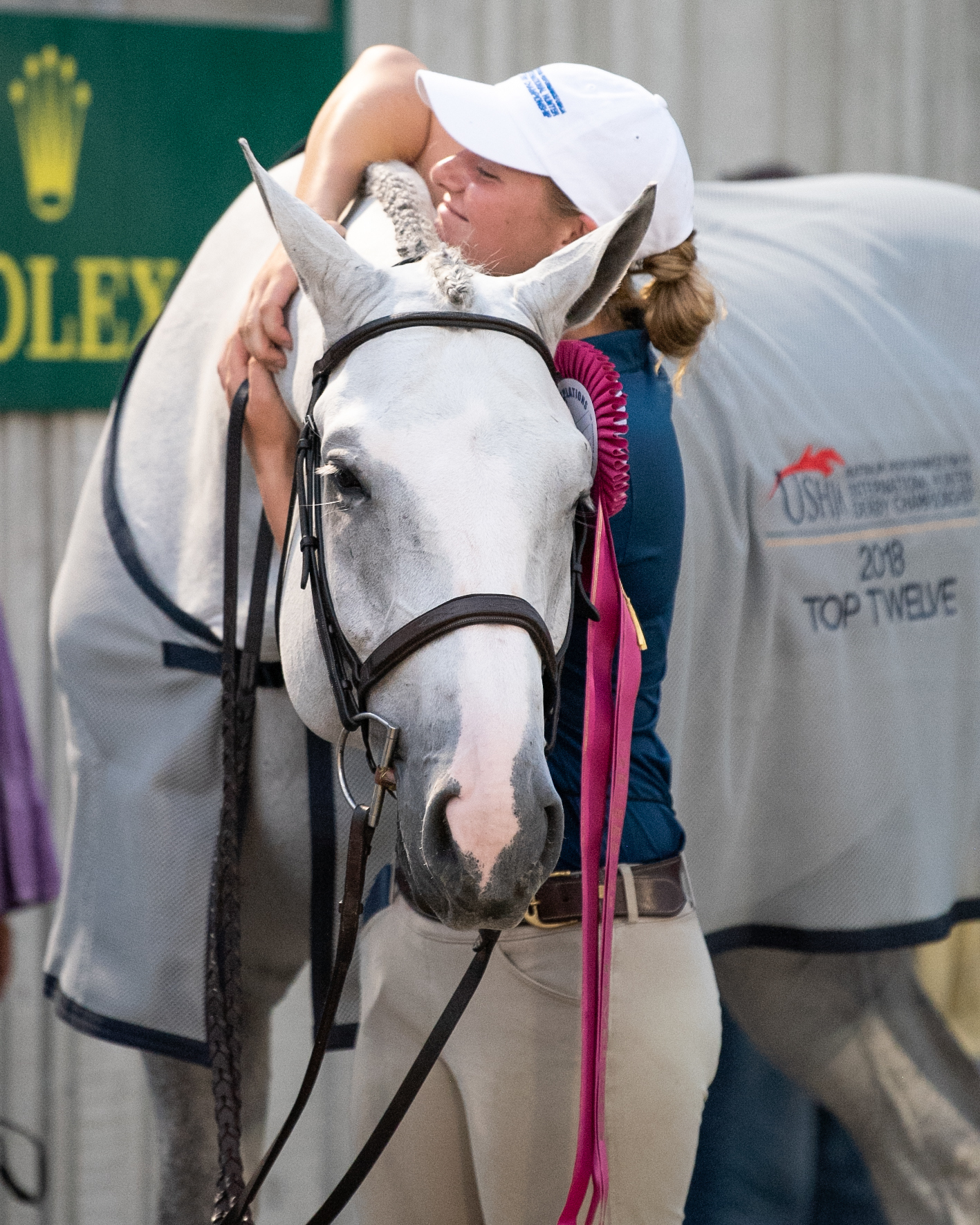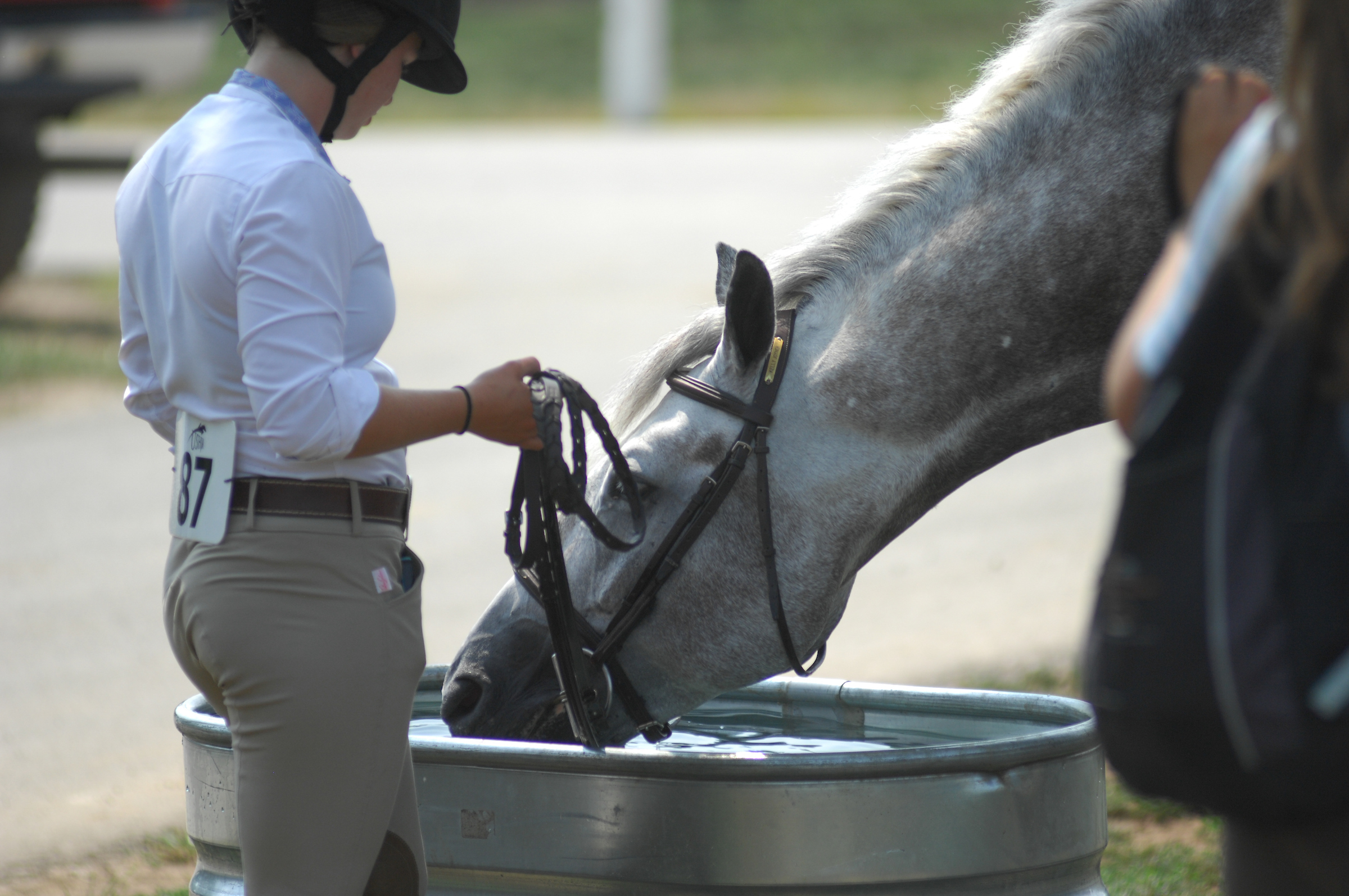
Horse and Rider Advocate Series
USHJA's bimonthly series on horse health and wellness is based on guidance and input from the USHJA Horse and Rider Advocates Committee. This series aims to provide members with information they can use to help keep themselves and their equine partners happy and healthy throughout the year.
Be an Equine Welfare Advocate

The USHJA and the USEF take safety and horse welfare very seriously. The USHJA Horse and Rider Advocates Committee seeks to educate equestrians on how to serve as advocates for horses. Any action appearing unsafe, unsportsmanlike, is a possible violation of the rules or is generally unsettling can be reported to an official and immediate action can be taken to help educate the individual how to better handle the situation.
Education for increased advocacy of the horse:
1) Proper Use of the Stick/Whip
- The use of a whip or stick is appropriate in many situations. However, it is important to know that over-use of the whip can cause physical pain and mental trauma to our horses. “The use of a whip must be for a good reason, done at the appropriate time, in the proper place and with appropriate restraint,” (HU100.1d). It is essential for equine advocates to report, not ignore, over-use of a whip.
2) Safe and Fair Longeing Practices
- On the hunter/jumper show scene, it is common to see horses trotting at the end of a longe line. Horse advocates help ensure proper longeing techniques for our horses’ safety. Unsafe longeing practices—for example, excessive speed and/or extended time—are dangerous to horses and detrimental to competition goals. Use proper equipment with appropriate handling skills for a sensible duration (no longer than 20 minutes). For tips on proper longeing techniques, view these longeing videos.
3) Hydration Needs
- An adult horse is nearly 70% water and his daily water requirements vary by age, body condition, quality of feed and activity. On average, an idle horse in a cool environment will drink six to 10 gallons of water per day. Working horses typically consume 10-18 gallons daily, which may increase to 30 gallons in hot environments. Horses that are competing need regular water breaks throughout the day, allowing for rehydration. In warmer temperatures, shade and/or frequent stall breaks, both with water, are crucial. If competition schedule demands waiting by the ring for an extended time, be sure to offer cool, clean water between classes. Find shade to stand under and untack, if possible. Your hydrated horse will perform better and will certainly thank you for a refreshing drink! Find guidelines for clean water from the AAEP.

4) Consideration of Competition Schedule
- When planning your show schedule for the season, take into account factors that may affect your horse’s ability to perform at the highest level. While there is no magic number for how many classes or competitions is too many, it is worth considering adjusting your show schedule on behalf of your horse:
- Age: Seasoned schoolmasters may not be able to withstand too many rounds, and in contrast, a young horse is still growing and showing too frequently may be detrimental to his health.
- Fitness: Unfit horses lack the stamina to compete too often, and his bones or muscles may break down when fatigued. A sensible training schedule at home will properly condition your horse for competition.
- Training level: Greener horses may need more rounds to introduce them to competition experience. In this case, lower fence heights are ideal.
- Time of day, time of year, venue, hauling distance and other factors may affect your horse’s ability to perform
- Like people, horses experience wear and tear on their bodies as they grow, work and play. To reduce the chance of over-working or injuring your equine partner, be conscious of how much you are asking of them. For more tips on setting your competition calendar with your horse in mind, stay tuned for the next Horse and Rider Advocate Series article coming in November.
For more information on reporting horse welfare issues, please read “Safeguarding Our Sport: Reporting Horse Welfare Concerns and Other Rule Violations at Competitions” or reach out to the US Equestrian Federation Regulations Department. Reports can be anonymous, directed to USEF or feel free to talk with a licensed official at your competition. Advocating for our equine athletes is the highest display of horsemanship
|
Photos: Tricia Booker/USHJA and Robbie Meisel/USHJA |



